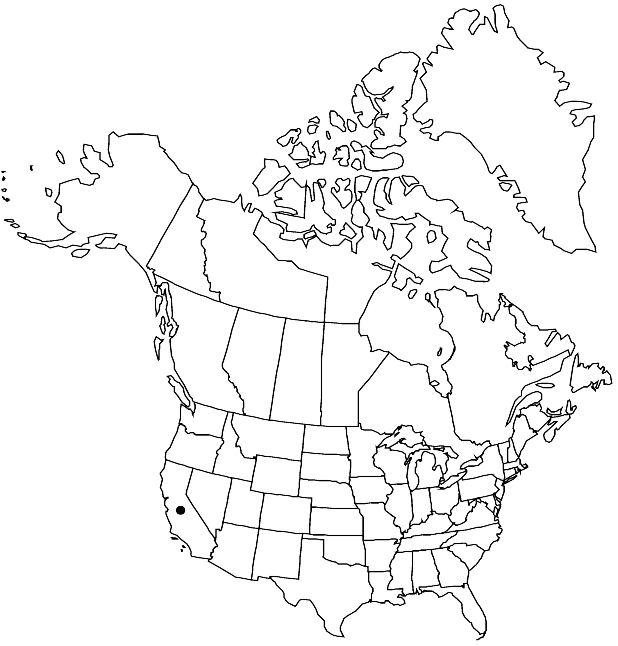Draba corrugata
in W. H. Brewer et al., Bot. California 2: 430. 1880.
Biennials or perennials; (short-lived); caudex simple (covered with persistent leaves); not scapose. Stems branched, (0.3–) 0.4–1.7 (–2.5) dm, pubescent throughout, trichomes simple and long-stalked, 2-rayed, 0.4–1.4 mm, with smaller, 2–4-rayed ones, 0.1–0.6 mm, (simple ones usually fewer distally). Basal leaves (densely imbricate); rosulate; shortly petiolate; petiole base and margin ciliate, (trichomes simple, 0.6–2 mm); blade oblong to narrowly oblanceolate, (0.5–) 1–2.2 (–4.5) cm × 2–5 mm, margins entire, surfaces densely pubescent, abaxially with stalked, 2–4-rayed trichomes, 0.4–1.2 mm, (simple trichomes often along midvein), adaxially with mostly simple and long-stalked, 2-rayed trichomes, 0.6–1.3 mm, sometimes with 3-rayed or 4-rayed ones. Cauline leaves (4–) 6–10 (–13); sessile; blade oblong to ovate, margins entire, surfaces pubescent as basal. Racemes (10–) 18–55 (–67) -flowered, ebracteate or proximalmost flowers bracteate, slightly or considerably elongated in fruit; rachis not flexuous, pubescent as stem. Fruiting pedicels divaricate to ascending, straight, 2–6 (–8) mm, pubescent as stem. Flowers: sepals oblong, 2–2.7 mm, pubescent, (trichomes short-stalked, 2–4-rayed); petals yellow, linear, 2–3.5 × 0.2–0.5 mm; anthers oblong, 0.6–0.8 mm (exserted). Fruits elliptic to oblong or linear to oblongelliptic, slightly twisted or plane, flattened, 5–13 (–17) × 2–3 (–4) mm; valves pubescent, trichomes short-stalked, cruciform, 0.1–0.5 mm, (sometimes with 2-rayed or 3-rayed ones); ovules 16–28 per ovary; style 1.4–3.4 mm. Seeds oblong, 1–1.2 × 0.6–0.8 mm.
Phenology: Flowering Jun–Jul.
Habitat: Alpine fellfields, talus, open pine woodlands
Elevation: 2000-3500 m
Discussion
Of conservation concern.
Draba corrugata was broadly circumscribed by R. C. Rollins (1993) to include three varieties that we treat as distinct species. For a discussion of species limits and distinguishing features, see I. A. Al-Shehbaz and M. D. Windham (2007). Draba corrugata, in the strict sense, is known from the San Antonio, San Bernardino, and San Gabriel mountains in Los Angeles and San Bernardino counties.
Selected References
None.
Lower Taxa
"not" is not a number. "elongated" is not a number."thick" is not a number.

